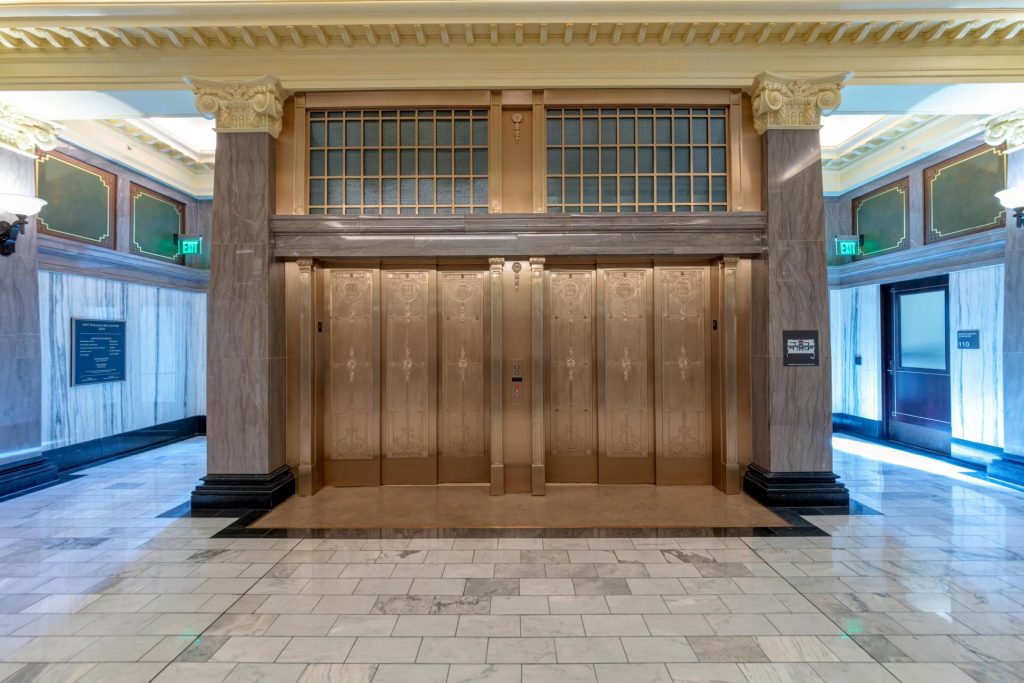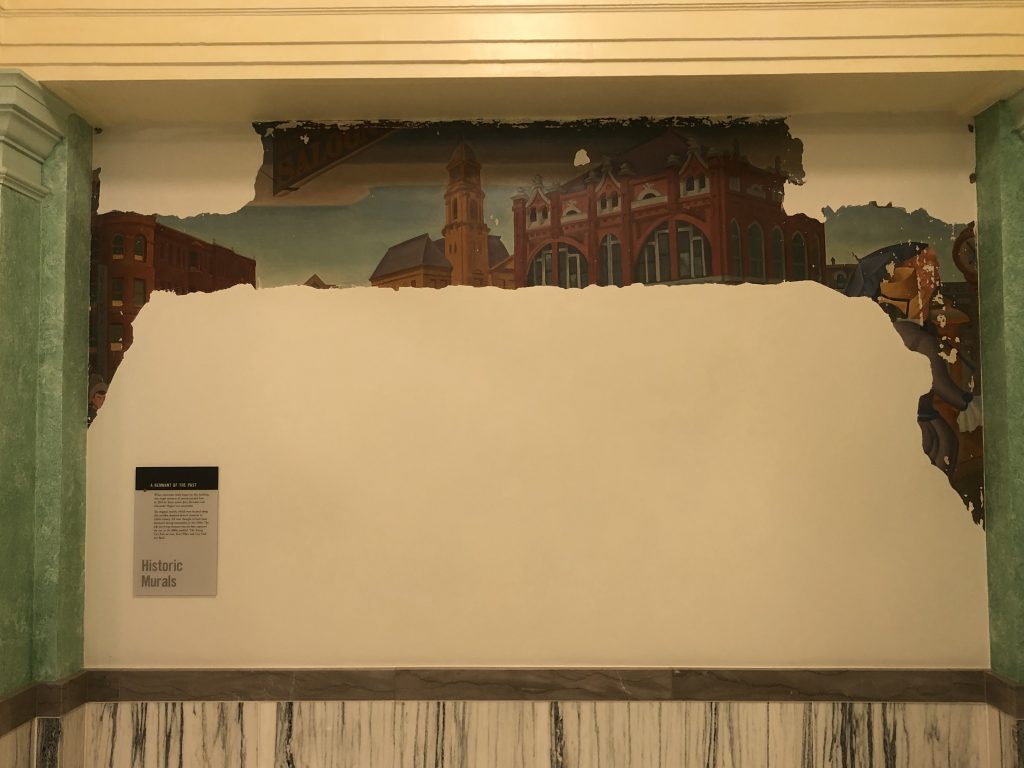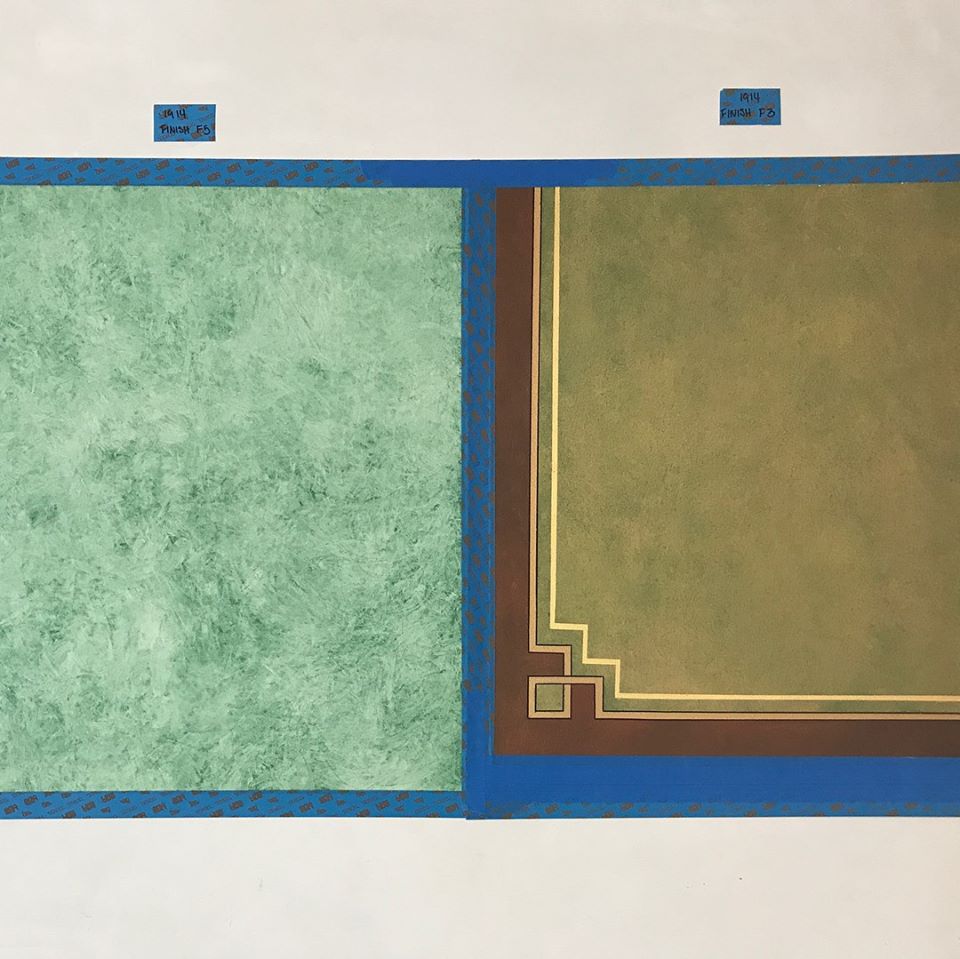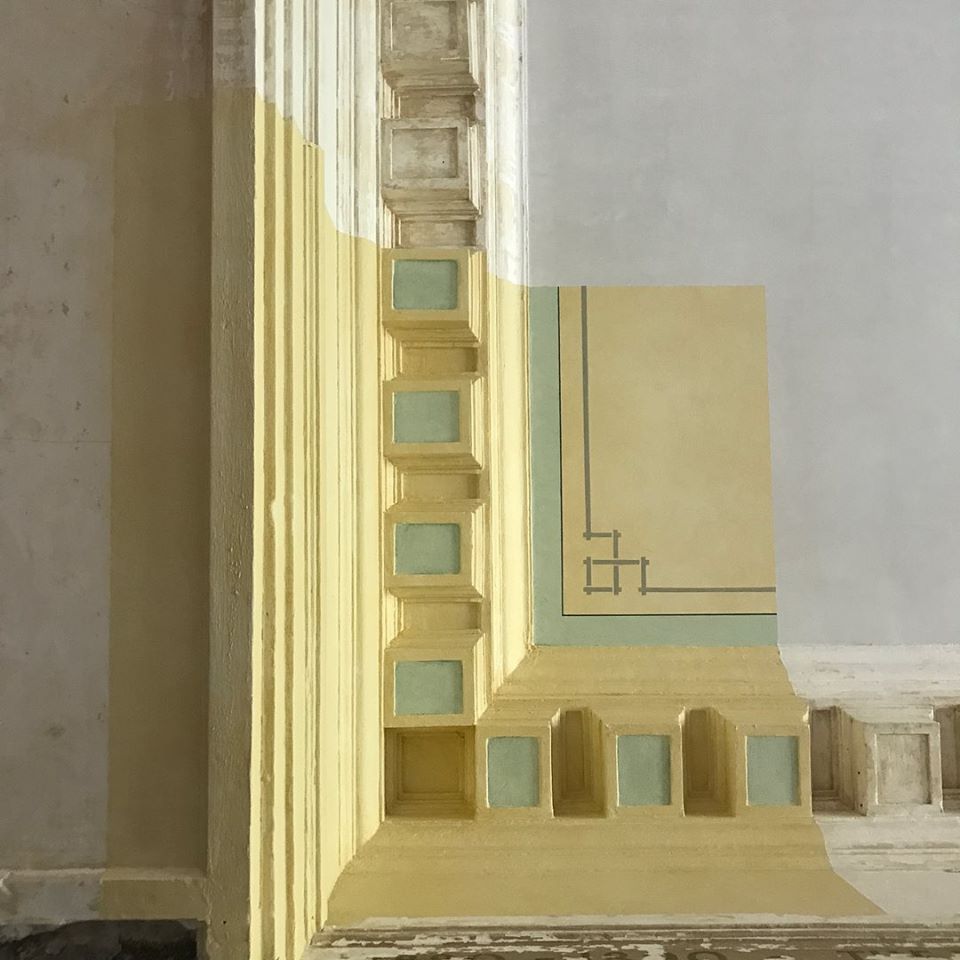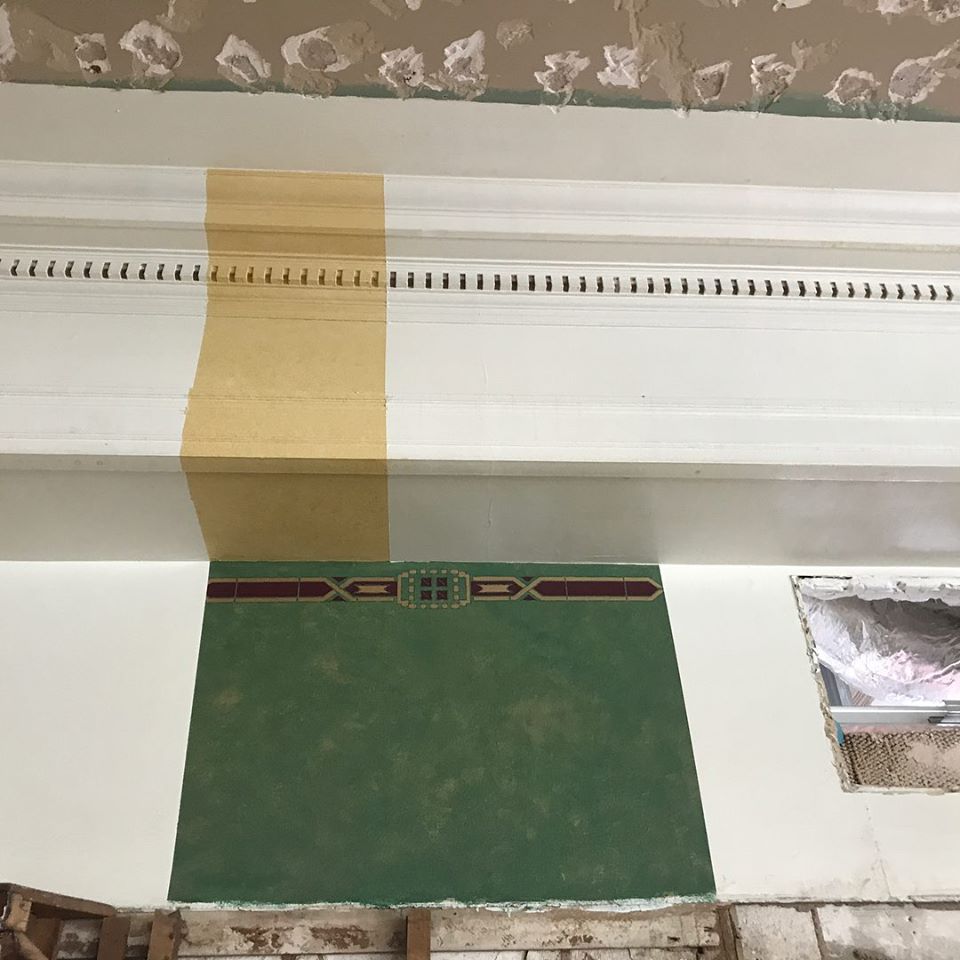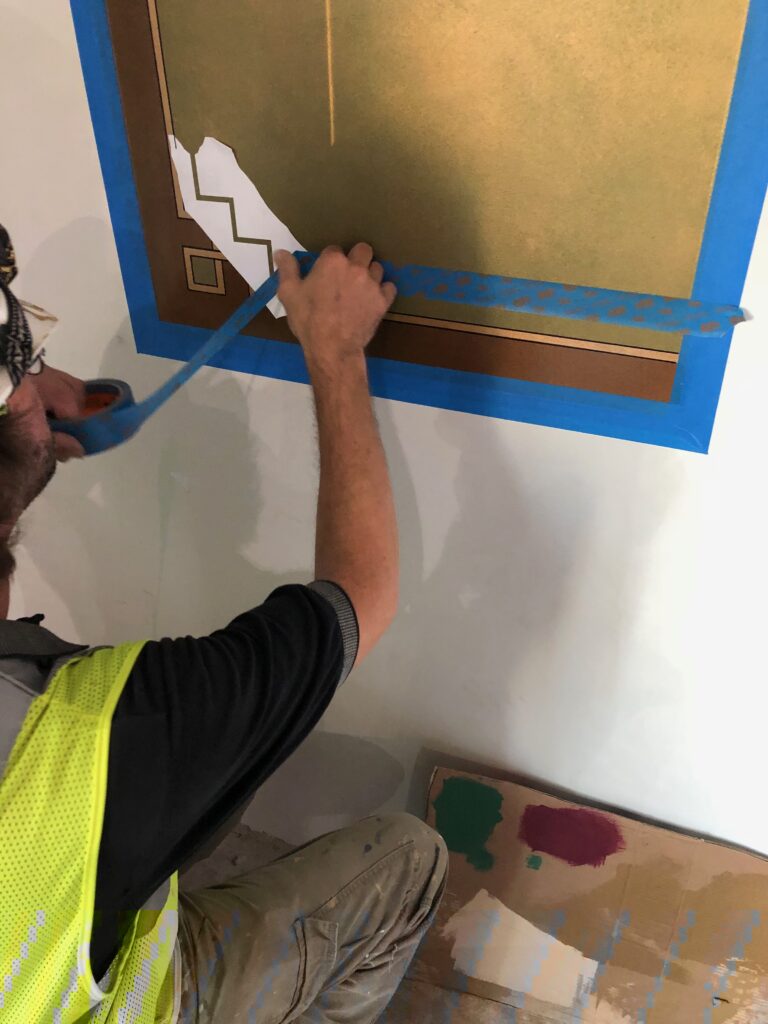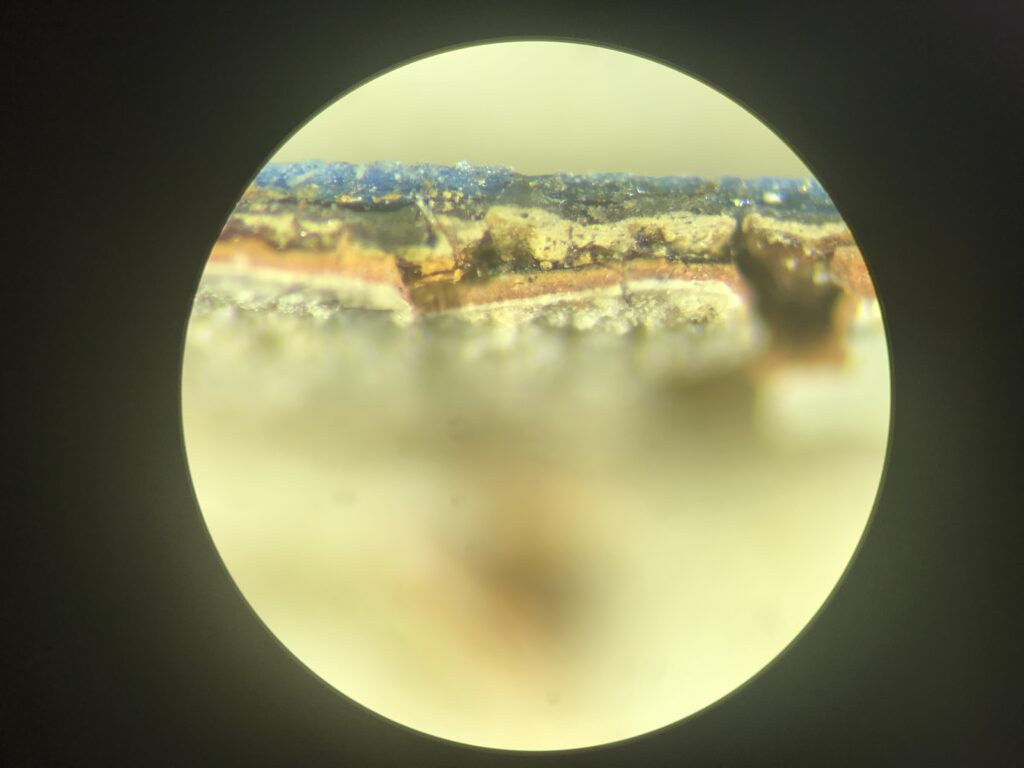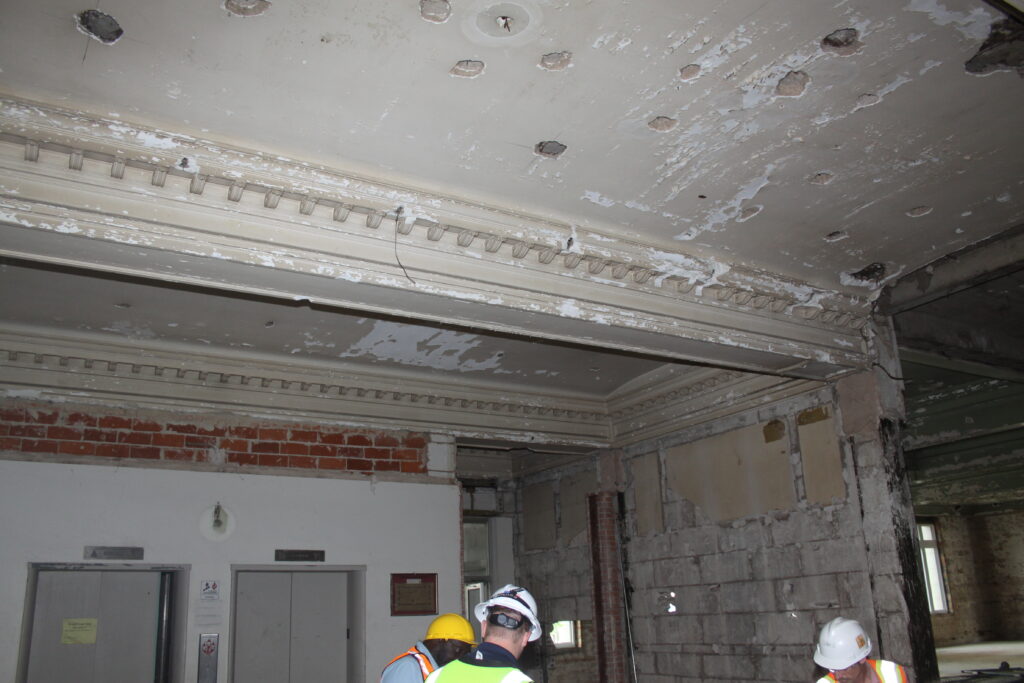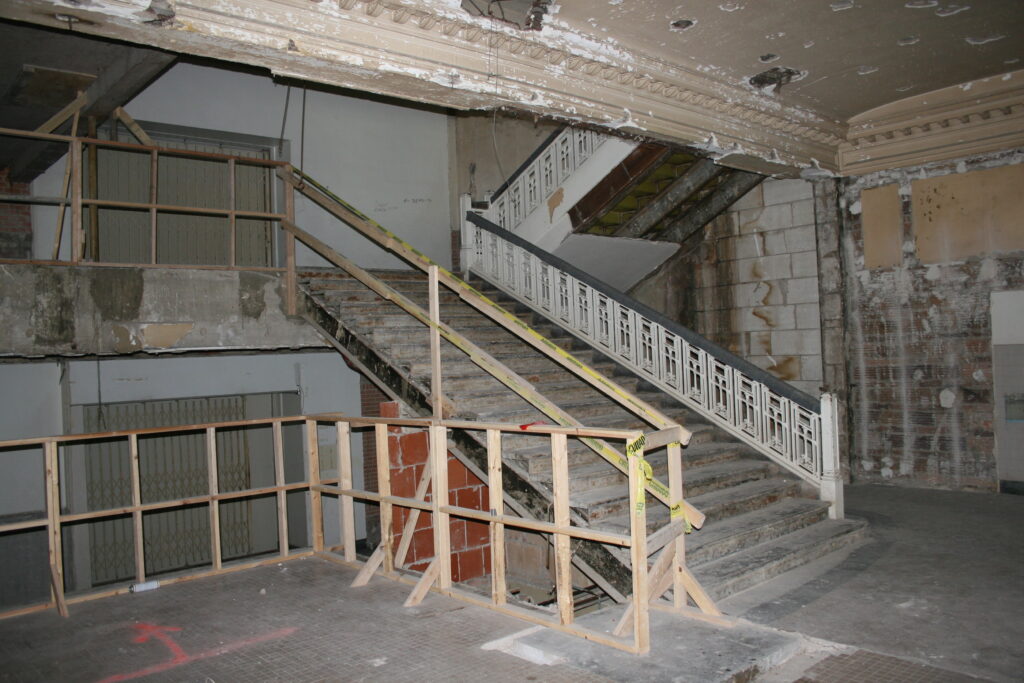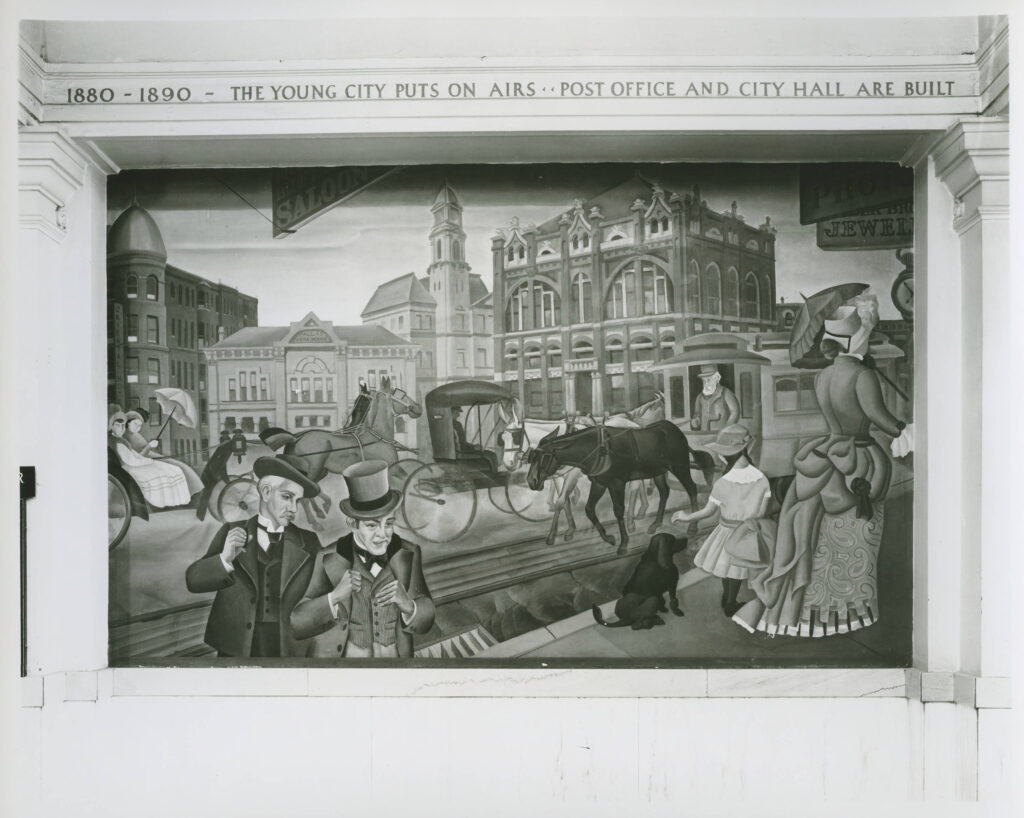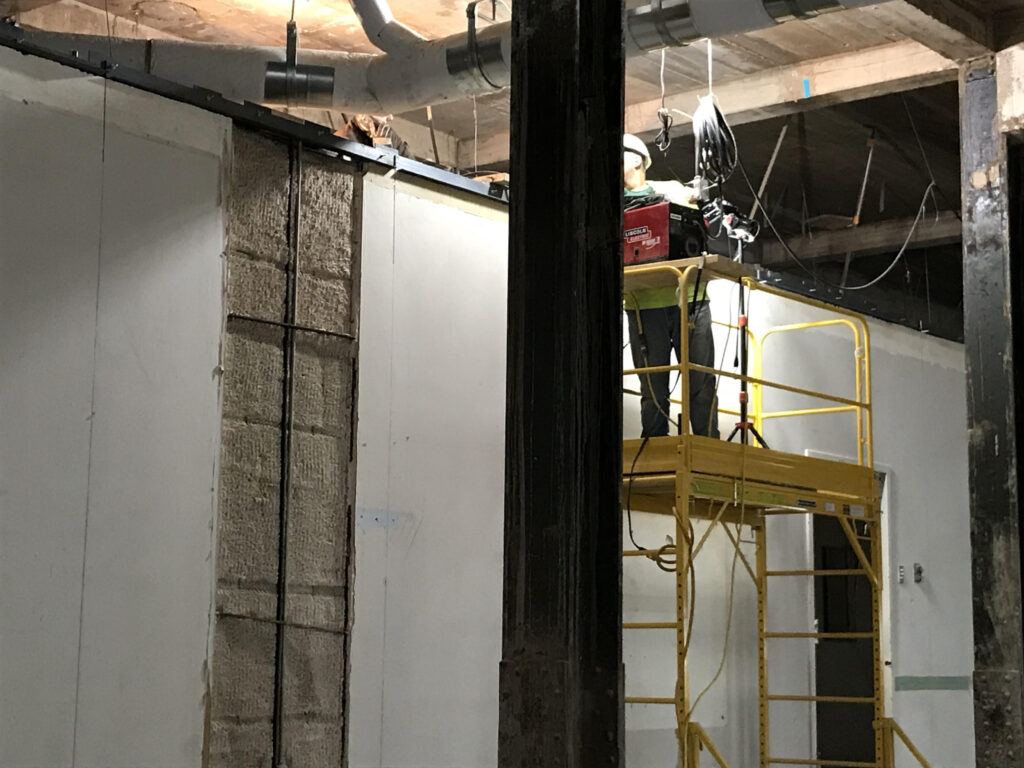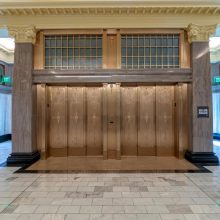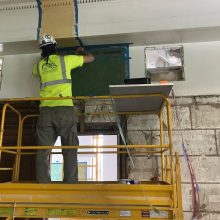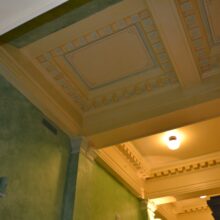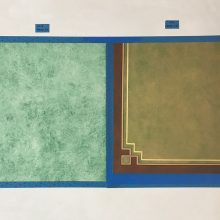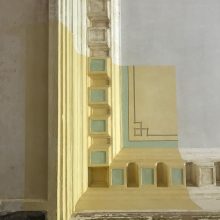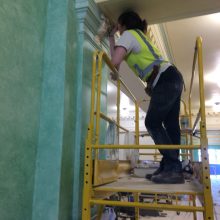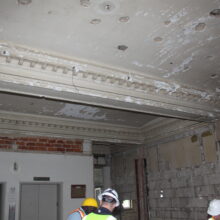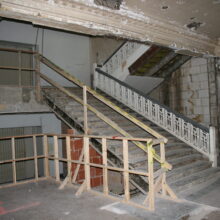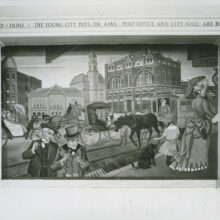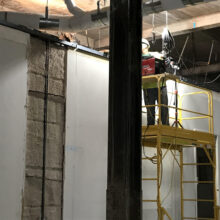UNT Dallas College of Law Building
EverGreene’s conservation and restoration specialists were engaged to restore original ornamental plaster ceilings and decorative finishes in preparation of the structure’s new use as UNT’s College of Law.
A historic finishes investigation determined the historic schemes and paint colors. With this information in hand, we proceeded to restore the historic plaster and finishes. Any damaged plaster was repaired or replicated as needed. The historic finishes were painted, stenciled, glazed, and gilded where applicable.
During this process, the remnants of a 1933 WPA mural were conserved. The majority of the mural had been removed or damaged when a door was previously added in its place. The mural was significantly deteriorated and required all flaking paint to be re-adhered to the substrate with a layer of varnish applied to protect it from the plaster fill that was introduced around it. It is the only remaining fragment out of a series of WPA murals by Jerry Bywaters and Alexandre Hogue that describes the history of Dallas.
The Building’s History
The Old Dallas City Hall, designed by C.D. Hill, was completed in 1914. The Beaux Arts building was constructed as the fourth City Hall in the city’s history and housed municipal courtrooms, the police department, city council chambers, offices of the mayor, jail, and all other municipal offices, in addition to a municipal auditorium. Changes were made to the building in 1924, 1933 (when 10 murals depicting the founding and development of Dallas were installed), 1940, and 1944.
In 1956, a five-story, modern-design annex named “The Municipal Building” was completed on the east side of City Hall (newly dubbed the Old Municipal Building) to provide additional offices for city departments. As part of the 1956 modernization, significant alterations were made to the City Hall interior spaces, which effectively covered or removed the original ornamentation. The Old City Hall gained notoriety in 1963 as the location of Lee Harvey Oswald’s detention, questioning, and murder following the assassination of President John F. Kennedy. Dallas’ fifth City Hall, designed by I.M. Pei, was completed in 1978, at which time many city departments were relocated. In 2006, the Old City Hall was named to the National Register of Historic Places as a contributing building to the Dallas Downtown Historic District; an amendment was submitted in 2013 to recognize the building’s national significance in association with President Kennedy’s assassination.
